It was an old friend (who's also in that adventure group btw.)
"Hey
"Maybe. What is it?"
"I don't know. I'll give you his email. Oh, and it's in Ballarat."
Ha ha ha! Ho ho ho... Ballarat is the most famous of all Australian goldfields. Possibly once the richest gold find in the world. I'm a little stunned at the synchonicity here.
So of course I contacted the fellow. The gear was a HP 3567A PC Spectrum/Network Analyzer, with a good set of modules, complete manuals, and even the original disks. For my main project this is like striking gold. Very very useful. So precious in fact that I decided immediately I'd rather drive down to pick it up myself, than trust it to couriers. Besides, the guy didn't want to go to the trouble of packing it, since it was a freebie. He was just the rare kind of person who simply couldn't bear to see it tossed in a dumpster, which is what would normally happen to gear like that which a company no longer wanted. (Well, it does in Australia!)
In fact when I first contacted him he'd just given up waiting for news of anyone who wanted it, and had already tossed all the manuals in the dumpster. That is, he'd dumped the loose pages, while keeping the four nice ring binders because he figured he might need them for something. "Arrgh!" I said. "Do you think you could please dig them out again for me?"
"Oh all right. They'll be out of order, are you sure you want them?" "Yes, really. Please."
So, suddenly I'm planning a driving trip to Ballarat. From Sydney it's 969 Km, optimistically estimated online at 9.5 hours. Except my car is old, and I'm old too. At my age driving long distance while tired is highly unwise. Plus I like to take my time and see stuff on the way. So let's say two days, with a camping stop on the way.
Now, what else can I use this trip for? Why not actually do some gold prospecting? Pick up the HP gear, then a week car-camping on the goldfields, then I can drive to Melbourne for an annual get-together of our exploring group (it's national), then a side adventure in Kosciusko alps (with a friend who was also going to the Melbourne get together) on the way back to Sydney. Also, this sounds like a good time to set up the solar powered car-camping kit I've been thinking of... solar panels on the roof panier, big batteries behind the seat, a battery charge management unit and a sine wave 240VAC inverter...
Time was short, the guy in Ballarat was going away on holidays very soon and I had to be there before he left. I got my shopping for the trip done - metal detector, maps, solar panels, etc, and packed food, camping gear just in time. But I didn't have time to finish assembling the wiring for the solar system. It needed robust inline plugs in all the cables so it could be broken down and reassembled during trips. I had all the parts, so threw them all and the tools I'd need in a couple of bags. Set off.
The first night I camped in a small state forest, about midway between Sydney and Melbourne on the Hume Highway. Got there shortly before dusk, set up the tent, had a simple meal, and by that time it was dark.
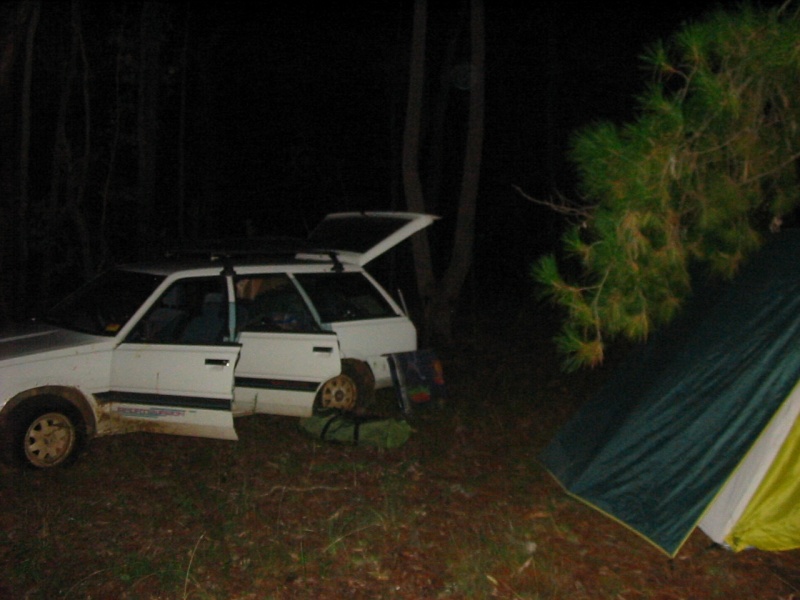
Car, tent, dark. This is about 15m away from a rarely used logging trail. It's native bush, but the other side of the logging trail is pine plantation and the pines are invading the Eucalypt forest.
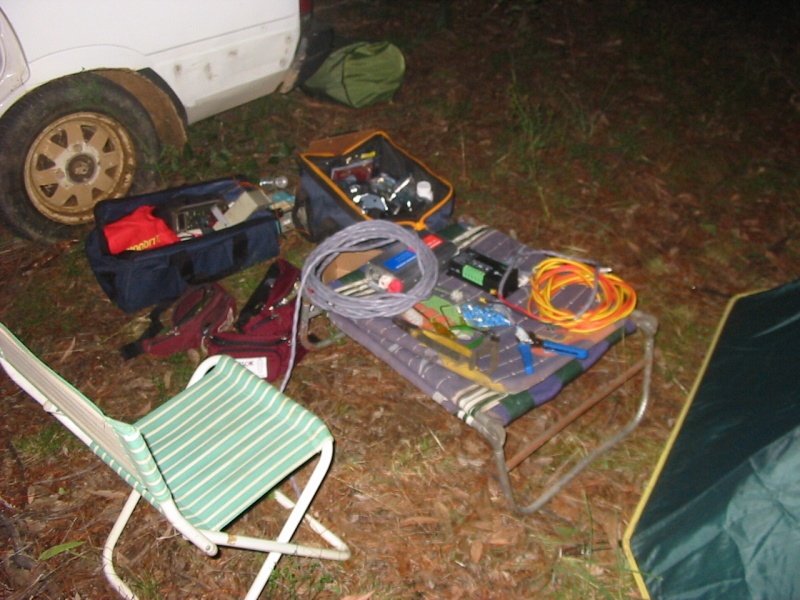
OK! Time to finish wiring up the solar system. My bush workbench. Using an LED headlight for illumination, a folded up deck chair for a work top. The work to be done was just cutting cable lengths, stripping ends, bootlacing and crimping, screwing boolaced ends into the connector blocks, and testing it with the batteries in the back of the car. Obviously nothing happening with the solar panels here.

It works! First time I've had mains power while camping. In this case only needed for phone charging and running my laptop. But it works great.
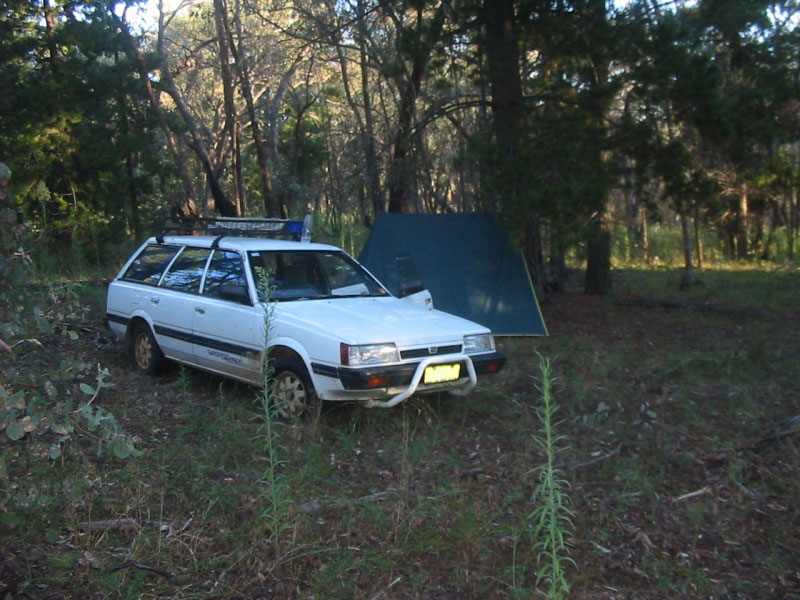
Early next morning before getting going. Introduced weeds are invading the forest along with the pine trees.
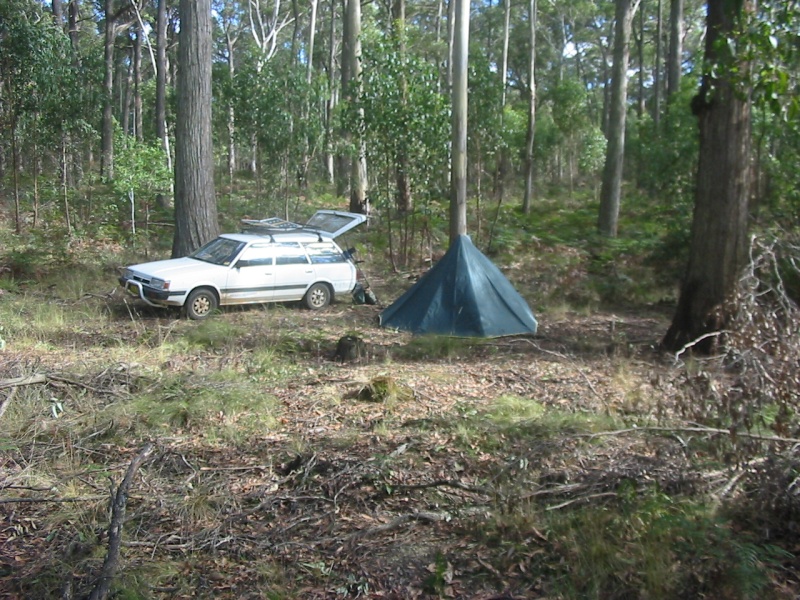
A few days later, camped in one of the Ballarat goldfields. The solar panels work well, even with partial shading by trees. You have to be careful walking around here, the ground is riddled with old vertical shafts. Narrow enough that fallen branches and leaves can sometimes disguise the openings, but many are deep enough to kill you.
Fortunately the guy had rescued all the manual pages from the dumpster. I'd made it to his company premises late on the afternoon of his last day there before his holidays. After loading the gear in my car I drove to a nearby public park in Ballarat, and spent a couple of hours sorting the pages out in the car, and putting them back in the correct ring binders. It must have looked strange to anyone passing by - the whole inside of the car piled with little stacks of B5 paper. It was windy outside, so the car was the only option. I couldn't bear to drive around with them randomly stacked in a cardboard box, and me not knowing if any were missing. Thing is, I know how hard it can be to find originals of such manuals on ebay and the US used manuals market. Much to my surprise every single page was there. One whole section (Installation) was missing, but I later found out it was a small separate spiral bound volume and I'd guess it had been lost previously. I was able to find and buy one eventually, after quite a bit of searching. Including finding one listed on ebay cheaply, but by a seller who refused to post outside the USA, or even discuss it.
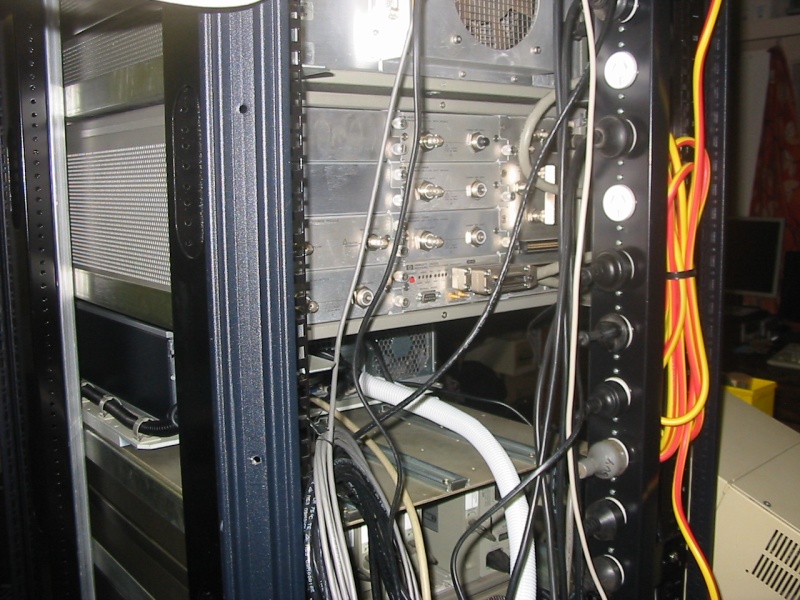
Now in Nov 2012, here's the HP 3567A PC Spectrum/Network Analyzer in my Black Rack. It's the one in the middle, with plugin modules. The thing has no front panel controls at all, just a bare face. Everything is done via the HP-IB and a computer. The unit does do a self-test on power up, and according to that it's all OK. But I haven't yet got the HP-IB interface and PC software up enough to talk to it yet.
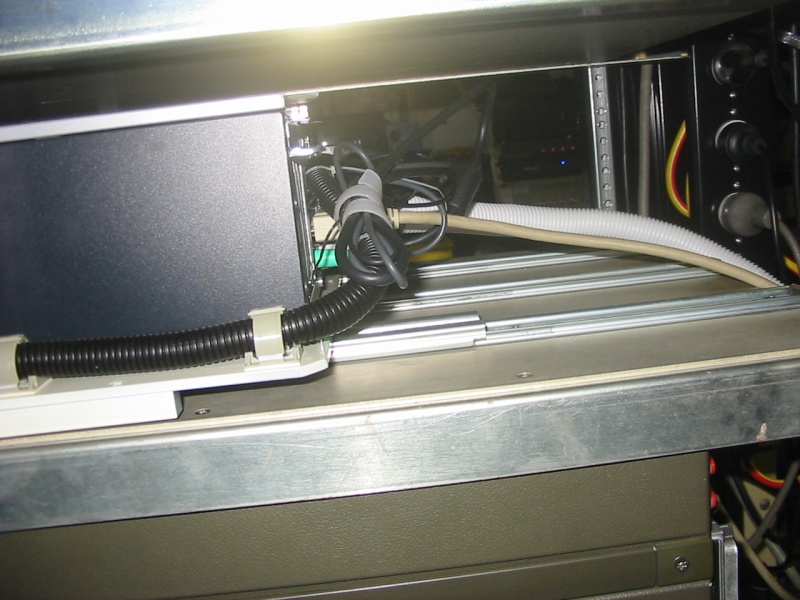
Cable discipline at the rear of the PC is greatly improved. The white and black conduits are slit - just slip over the wires. The small cable bundle is tied with a short section of spiral wrap. The tray with the PC slides back into the rack, and it's important to stop cables from dragging over the sharpish back edges, getting wedged between the tray and the side frames, or being pulled out of the back of the PC.
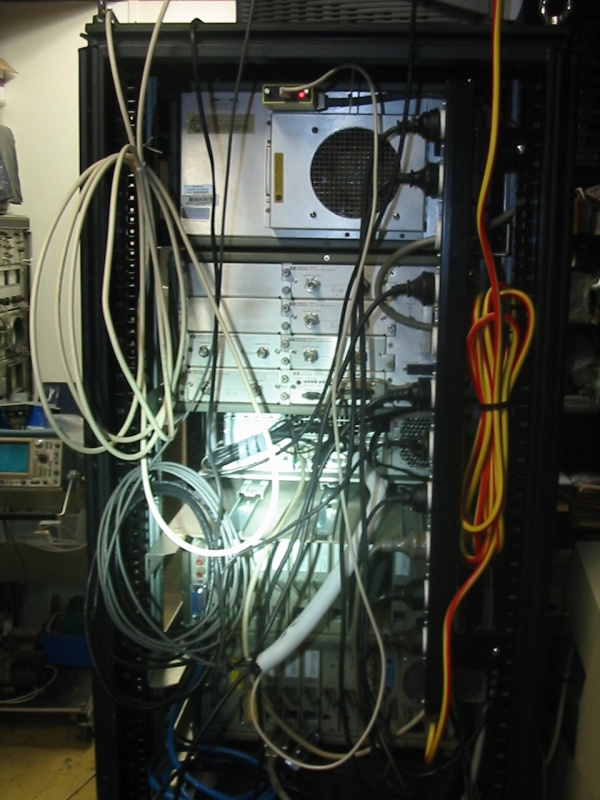
The rear of the Black Rack. At the top, the small yellow block with a red LED is a USB to HP-IB interface by http://prologix.biz Seems to be a very nice device, and very affordable. It makes the HP-IB accessible as a standard PC serial COM port. Learning to use it, and finding/writing a suitable scripting system is my next job on this rack.

Another problem. Where can I find matching connectors and cable for these input connectors on the back of the 3567A?
Are they 'tri-ax' - an inner coaxial cable, with an extra earthed shielding braid around that? I've never seen these connectors before in my life. Are they a HP custom design? What are they called? (Probably I should read that Installation manual!)